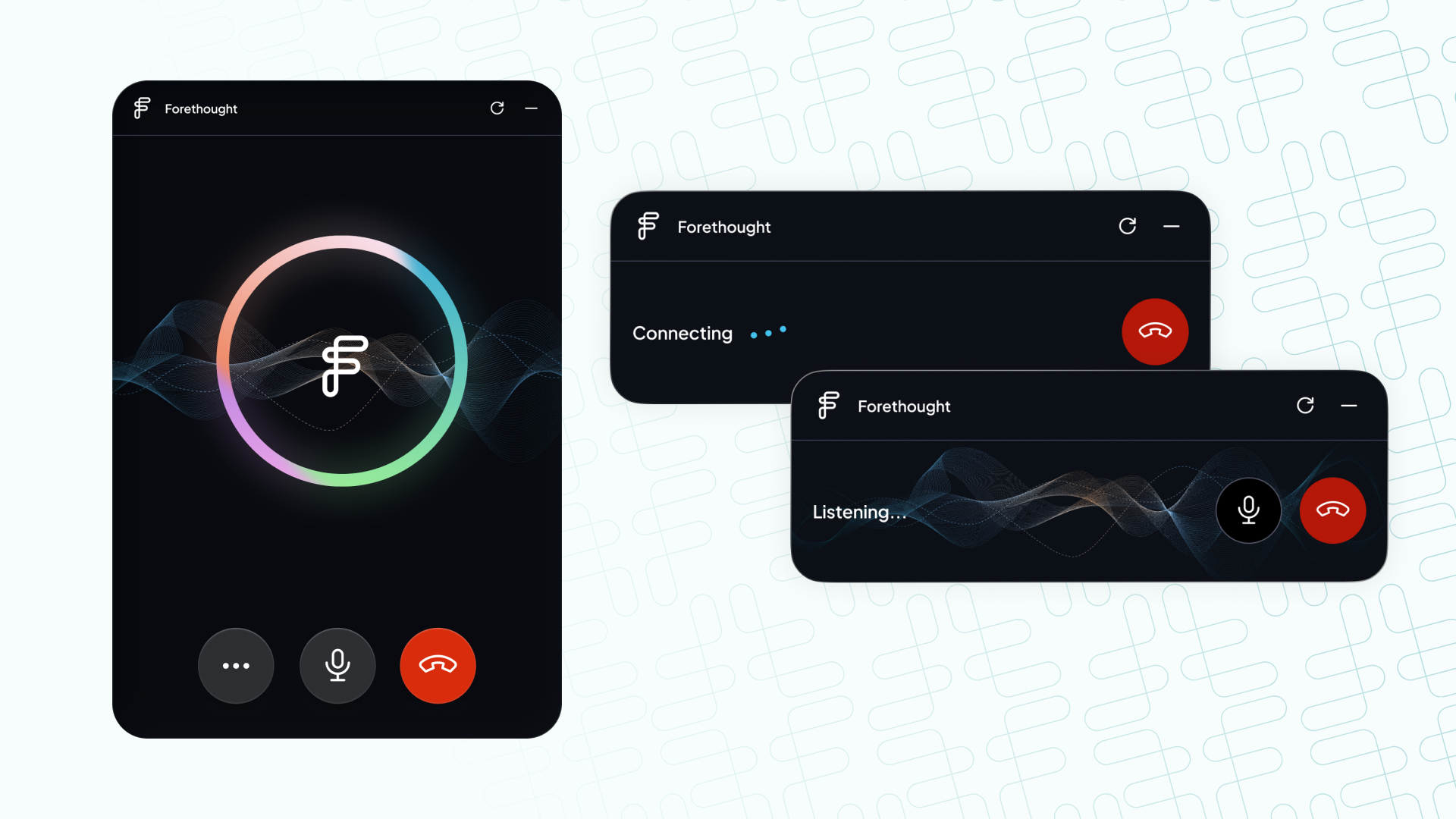Every CX leader is under pressure to scale support without adding headcount. Ticket volume keeps climbing, budgets aren’t, and the expectation to do more with less has never been higher. For most teams, the logical next step is to deploy AI. Many go for the cheapest solutions, hoping to save money while deflecting tickets and lightening the load on human agents.
On paper, low-cost AI tools seem like the fastest way to cut costs. In practice, they end up costing you much more than a more expensive, smarter AI solution would. They might be able to tell customers how to reset a password or start a return, for example, but since they can’t take those actions themselves, the same tickets eventually come back to your human agents. You end up paying for deflection software and still paying your agents to finish the job.
Our 2025 AI in CX Benchmark Report found that 62% of companies using these cheap systems saw flat or worsening cost per resolution because deflected tickets still needed human intervention. Those “cheap” solutions are primarily non-agentic. Smart, agentic AI, on the other hand, can take action to truly deflect issues away from your human team.
Why cheap AI fails to deliver the cost savings companies expected
Most of the low-cost tools are non-agentic. These systems—including many RAG-based chatbots and the generative AI add-ons built into help desks—can find information and write friendly answers, but they can’t take action inside your systems. They don’t connect to your CRM, billing platform, or internal databases in a way that lets them complete a task. They can tell a customer what to do, but they can’t actually do it, so every ticket that requires action eventually lands back on your team’s desk.
Imagine a healthcare patient messaging their doctor’s office through a patient portal at nine o’clock at night to renew a prescription. It’s a simple refill, with no appointment needed, according to this doctor’s policy. Someone just has to click “approve.” The AI chatbot reads the message, checks the knowledge base, and replies: “To renew your prescription, please call our office during business hours at 555-1234.” The system marks the chat as “deflected.”
The next morning, the patient calls. A staff member answers, opens the same record, and clicks the same button. The issue was finally resolved, but nothing was actually deflected. The patient waited twelve unnecessary hours, and your team handled the work anyway.
Additional data from our benchmark report shows this pattern is widespread. Non-agentic AI achieves a 33% deflection rate on average, but sometimes the metrics improve on paper while your queue stays the same. As volume grows, the cost gap widens. Mid-volume companies handling between 5,000 and 10,000 tickets per month pay about $18 per resolution with non-agentic AI, versus $15 with agentic systems.
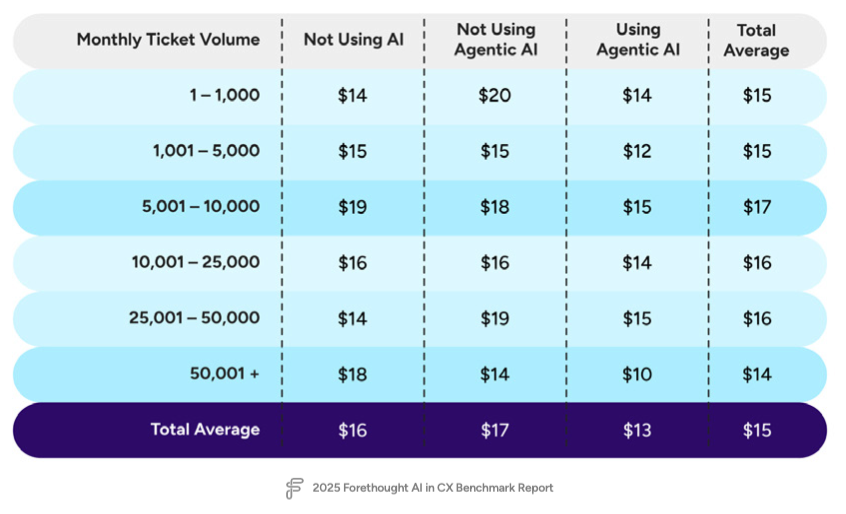
The problem worsens as your team manages more tickets. High-volume operations using non-agentic AI achieve only 35% deflection, worse than the 37% reported by teams without AI, because they’re spending more without reducing effort.
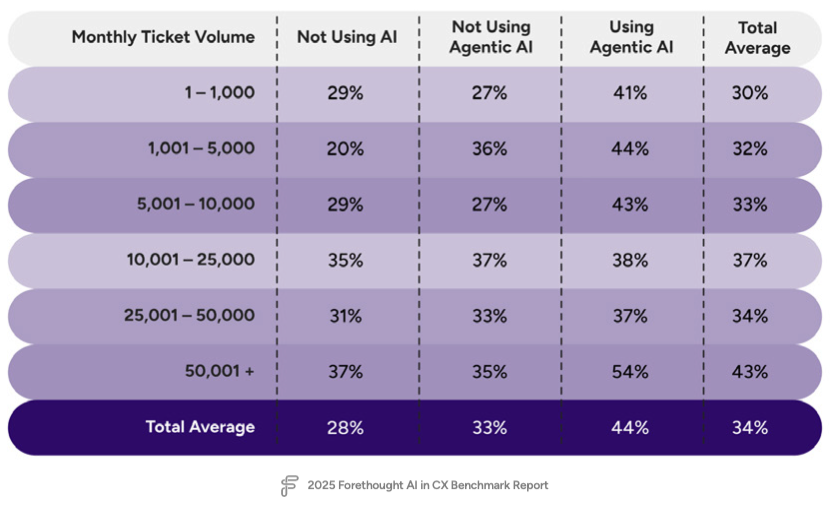
The result is a paradox that’s hard to ignore—the cheaper AI option ends up being the most expensive. Eight percent of companies saw cost per resolution rise, and 62% saw it stay flat or worsen, all because those deflected tickets still needed a human to close them.
Agentic AI delivers the deflection CX leaders expect
Agentic AI systems can take action inside your systems, not just provide information. These platforms connect directly to your systems or product so the AI can execute the tasks your agents would normally handle manually.
Forethought is one example of agentic AI. It works across chat, email, voice and Slack through structured workflows called Autoflows—step-by-step sequences that guide customers through multi-step processes while taking action at each stage: collecting information, validating inputs, writing to databases, and routing work to the right team.
Consider a new customer on a trading platform who needs to complete know your customer (KYC) verification before they can start trading. They have to submit bank statements proving the source of their funds, a fraud-prevention requirement that holds up every new account. Non-agentic AI might respond with instructions like, "You'll need to submit recent bank statements. Please email them to kyc@tradingplatform.com or call our support line at 555-1234 during business hours for assistance with your submission." The deflection just delayed the inevitable support interaction.
With agentic AI like Forethought, the customer could message the same question. If it’s connected to the correct systems, it could walk them through uploading the bank statements directly into the system, validate the file formats in real-time, confirm the uploads were successful, and submit the complete package to the KYC compliance team for review within the need for human intervention.
When AI can execute actions like this, 72% of companies see actual cost reduction because tickets are truly resolved rather than bounced back to agents. Agentic AI achieves 44% deflection and a 64% improvement in CSAT on average because customers get actual resolution, not a runaround that ends at an agent anyway.
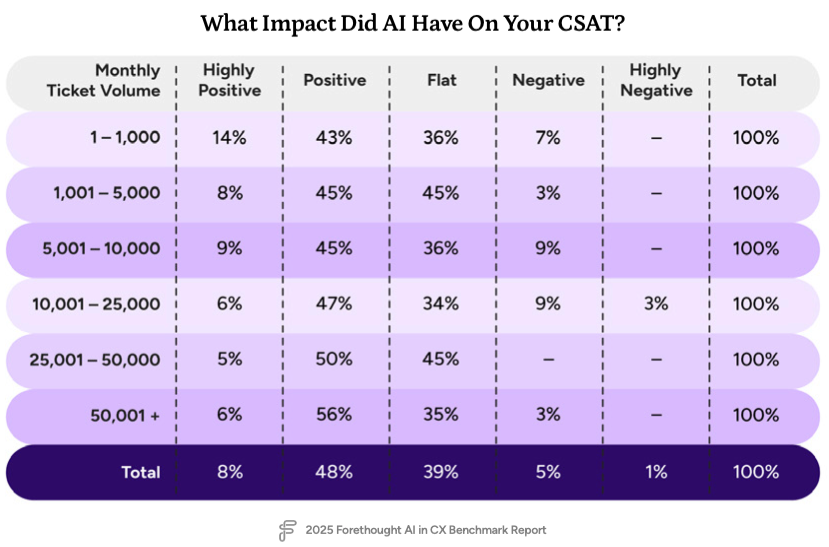
Even complex support issues that used to require multiple handoffs get resolved. Non-agentic AI achieves only 28% deflection in complex matters versus 44% for agentic, while costing $19 versus $15 per resolution. For moderate-complexity issues like KYC document submission, the CSAT gap is 81% for non-agentic versus 87% for agentic.
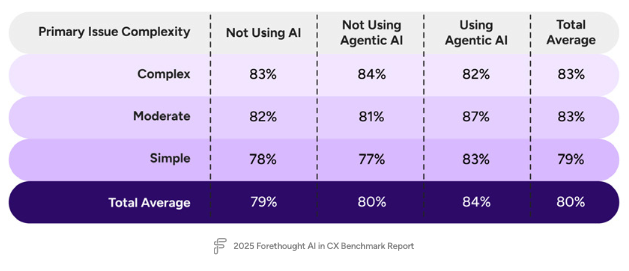
This is what deflection was supposed to look like all along. The customer gets their problem solved immediately, your support team focuses on issues that actually need human judgment, and your costs per resolution go down because you're not paying agents to be document couriers.
The switch from non-agentic to agentic AI prove agentic AI’s efficiency
Companies that made the switch from non-agentic to agentic AI and saw the difference first-hand. Their experiences show how the transition unfolds as you move from AI that deflects conversations to AI that resolves problems.
Grammarly built a 70-criterion evaluation matrix to avoid choosing AI that couldn't take action for its customers
Grammarly, a trusted AI assistant for communication and productivity, had a different problem with the same root cause. They'd already invested in AI automation before Forethought, a serious attempt at scaling support across multiple topics. But behind the scenes, the team was doing a massive amount of work just to keep it running. The bot couldn't handle context or follow-ups, so they weren't scaling support; they were scaling maintenance overhead.
When their contract came up for renewal, they knew they needed something fundamentally different. Grammarly built a 70-criterion evaluation matrix and reviewed multiple vendors before choosing Forethought. What separated Forethought was agentic AI that could reason through context and handle multi-turn conversations without rigid workflows.
Implementation took a week and a half. Deflection started at 60%, climbed to 87%, and has never dropped below 80%. CSAT also tripled to 4.2 out of 5, but more importantly, the manual maintenance overhead disappeared. API integrations enabled Forethought to take meaningful action in Grammarly's internal systems, driving an additional 5-10% gain in deflection.
Neither company failed at AI the first time because they didn't try hard enough. They failed because non-agentic AI fundamentally can't deliver what CX leaders need: tickets that get resolved without coming back to the team. Once they switched to agentic AI, the difference was meaningful.
Real cost savings come from AI that resolves issues, not AI optimized for deflection metrics
Every CX leader knows they need AI to scale support. The real decision is whether you're choosing AI that lets you grow without growing your team at the same rate. With agentic AI, your business could double and your support volume could double, while your team size stays the same. Agentic AI can take action, truly freeing your agents to focus on work that actually requires human judgment.
When that happens, your human agents spend their time building relationships with your highest-value clients, focusing on the most complex edge cases that require creative problem-solving, or reviewing escalations from the AI and refining workflows so the system gets better at handling new scenarios. They're managing the system, not just grinding through tickets.
Before you choose AI based on upfront cost, ask yourself one question: Can this AI complete the tasks my customers need done, or can it only explain how to do them? The answer determines whether you're buying automation or just buying a more expensive support operation.
Hashtags blocks for sticky navbar (visible only for admin)
{{resource-cta}}
{{resource-cta-horizontal}}
{{authors-one-in-row}}
{{authors-two-in-row}}
{{download-the-report}}
{{cs-card}}




.svg)

.svg)
.svg)

.png)



.png)



